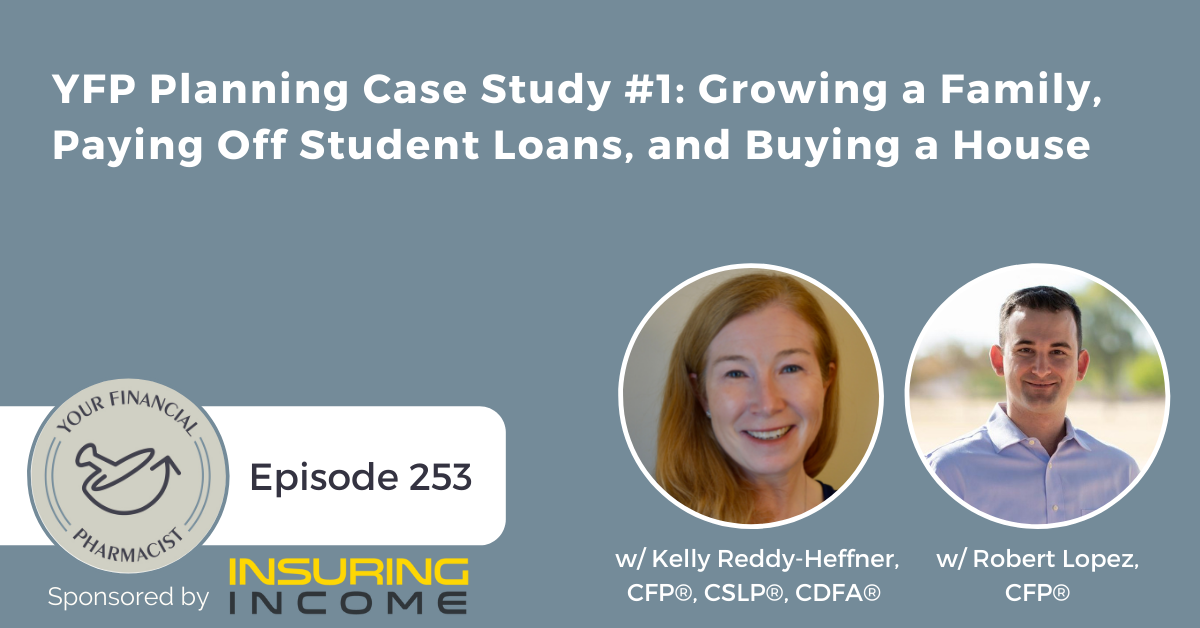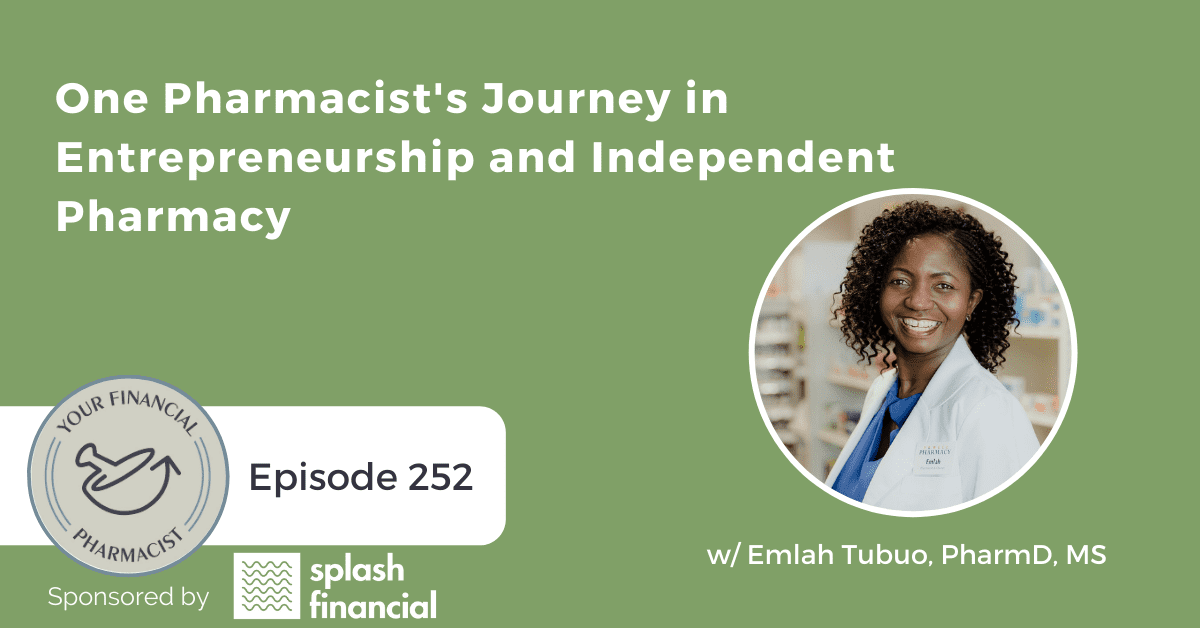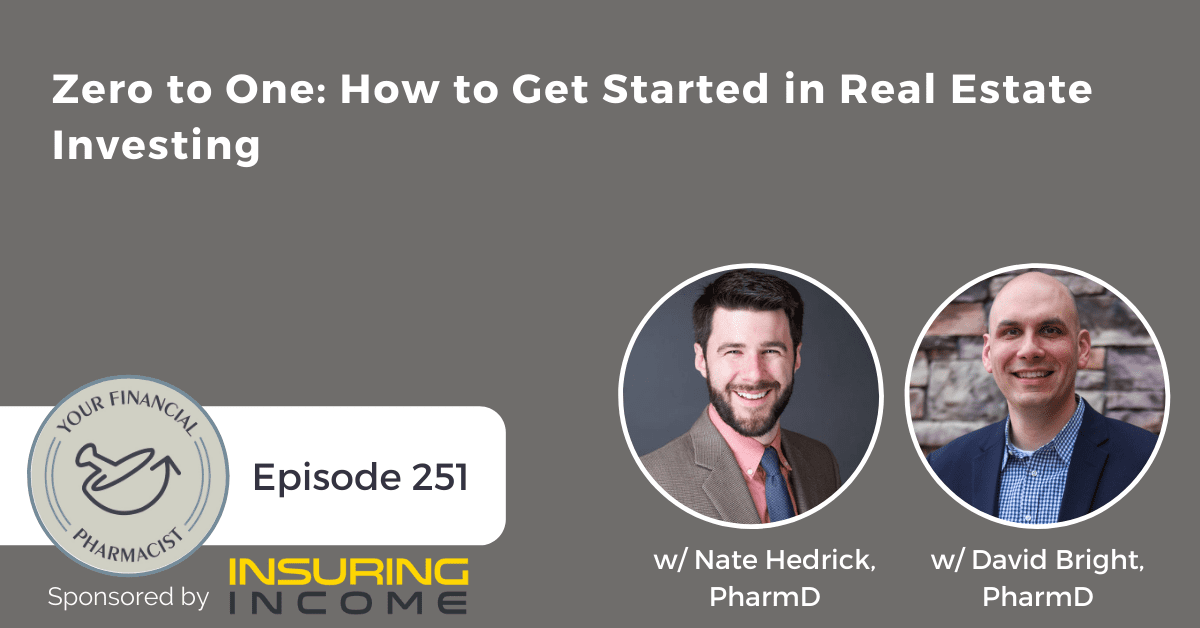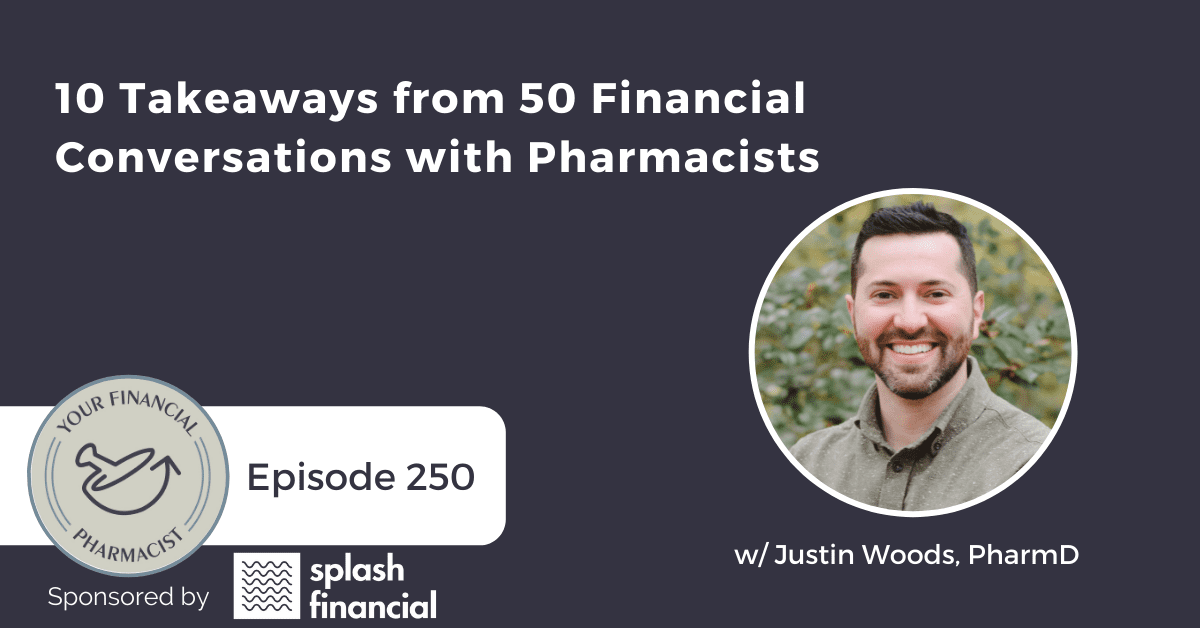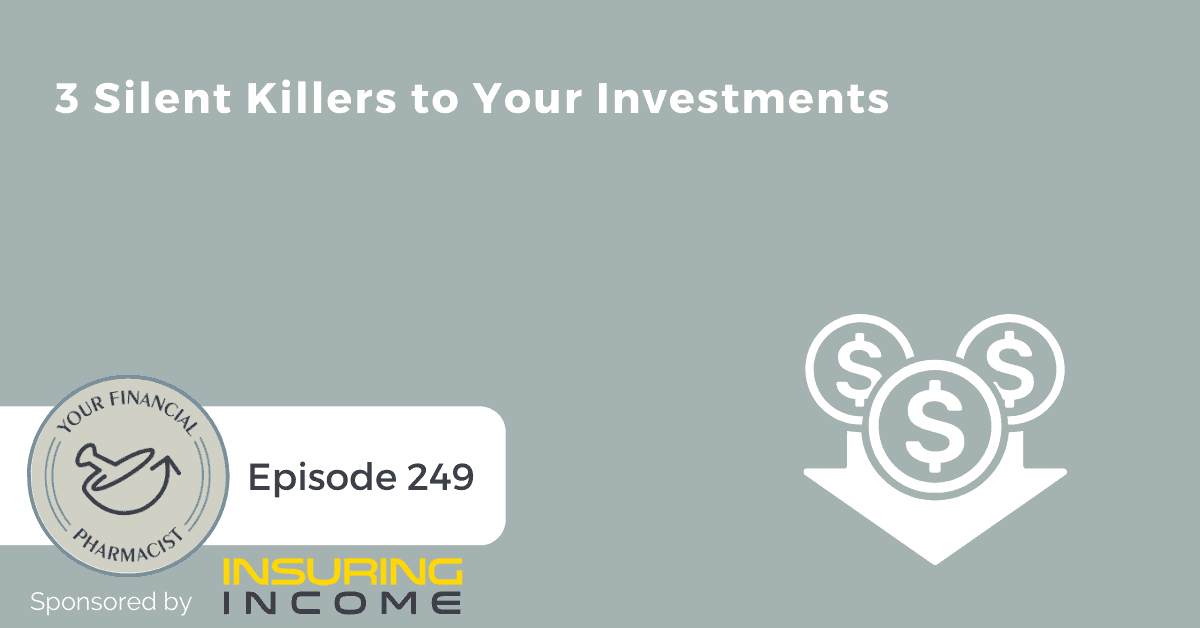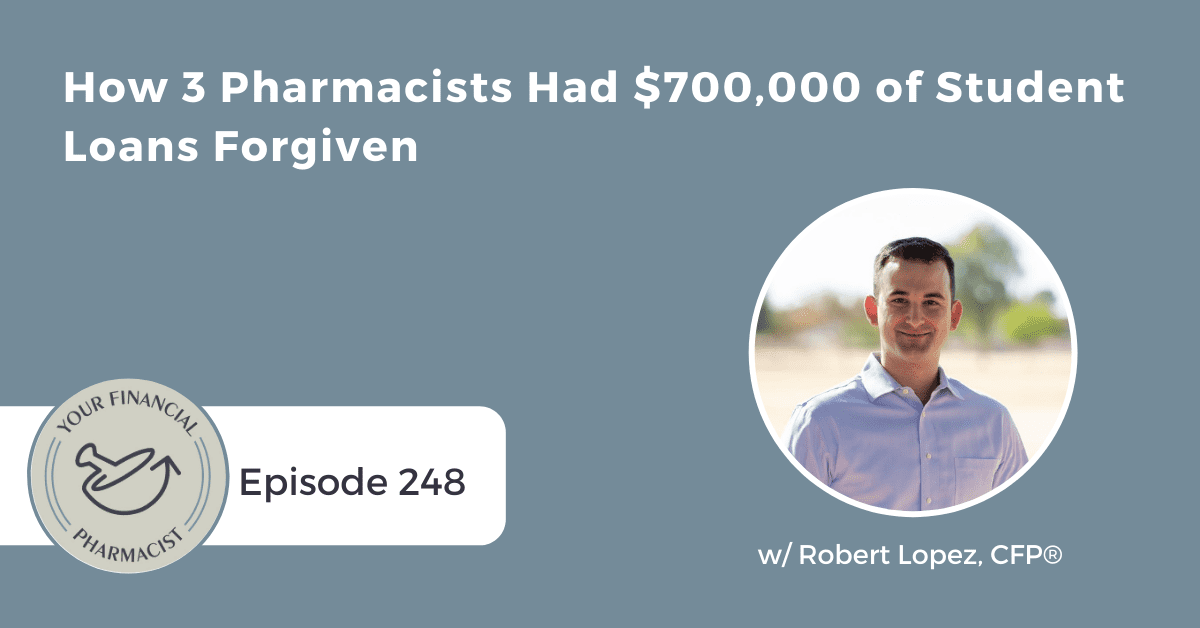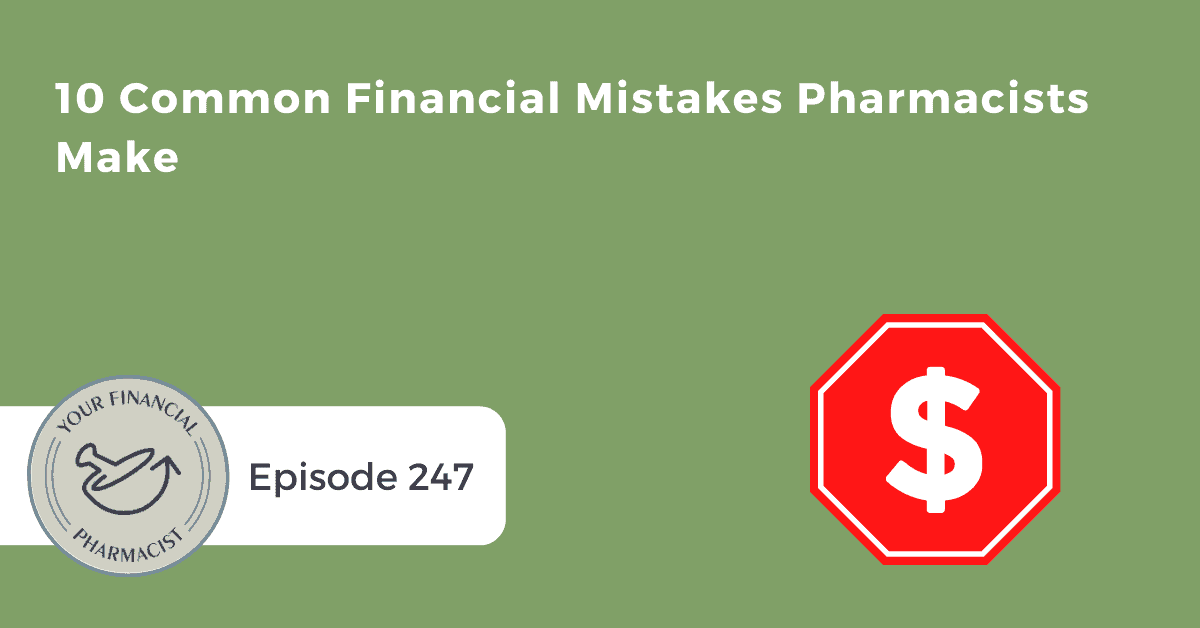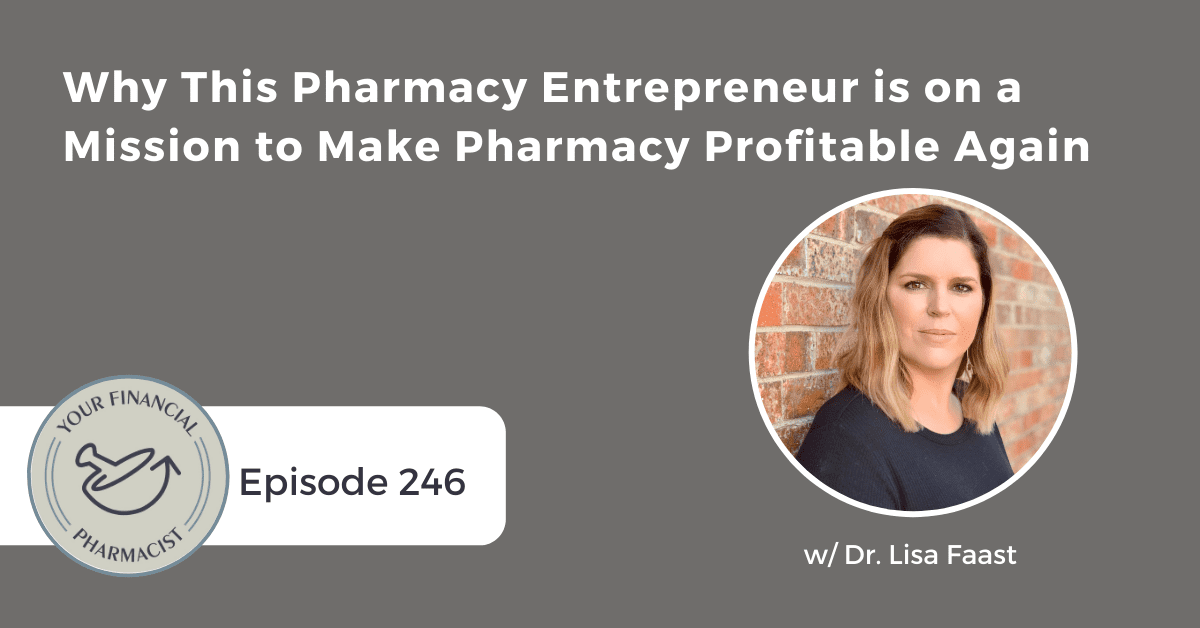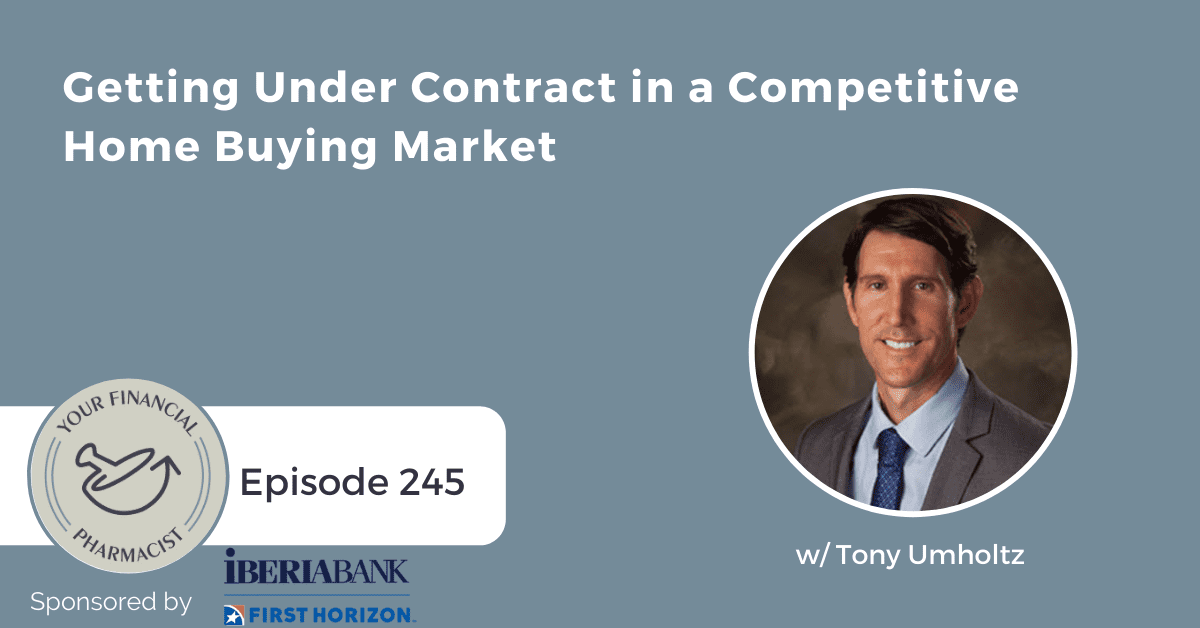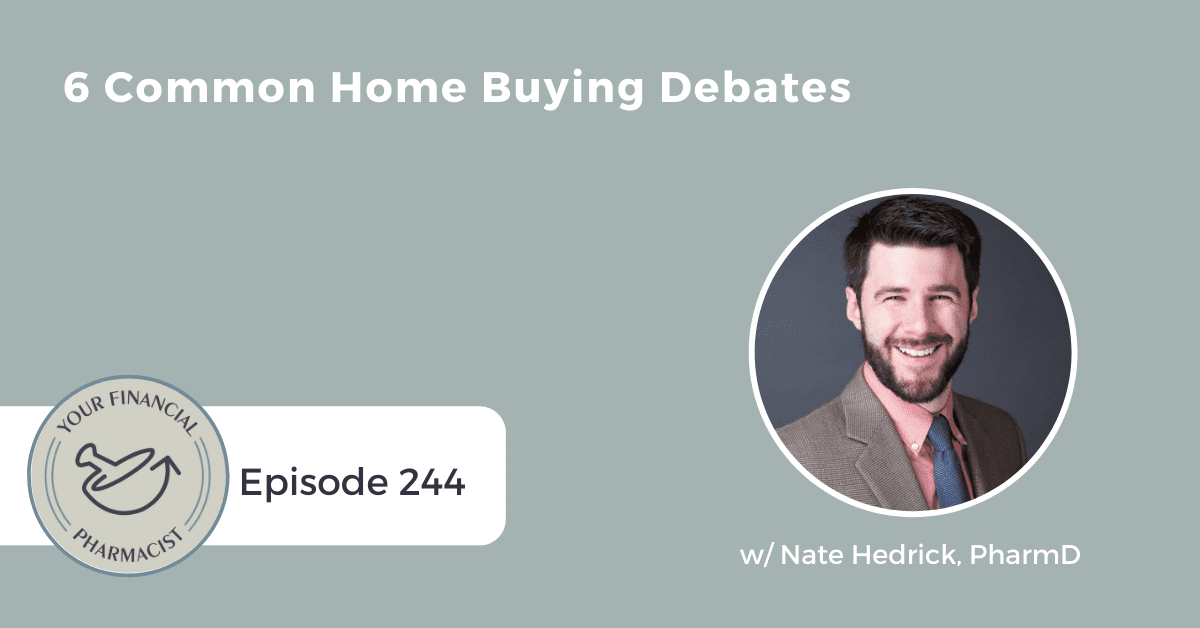YFP Planning Case Study #1: Growing a Family, Paying Off Student Loans, and Buying a House
On this episode, sponsored by Insuring Income, YFP Co-Founder & Director of Financial Planning, Tim Baker, CFP®, RLP® is joined by YFP Planning Lead Planners, Kelly Reddy-Heffner, CFP®, CSLP®, CDFA® and Robert Lopez, CFP® to walk you through a financial planning case study on growing a family, paying off student loans, and buying a house.
About Today’s Guests
Kelly Reddy-Heffner, CFP®, CSLP®, CDFA®
Kelly Reddy-Heffner, CFP®, CSLP®, CDFA® is a Lead Planner at YFP Planning. She enjoys time with her husband and two sons, riding her bike, running, and keeping after her pup ‘Fred Rogers.’ Kelly loves to cheer on her favorite team, plan travel, and ironically loves great food but does not enjoy cooking at all. She volunteers in her community as part of the Chambersburg Rotary. Kelly believes that there are no quick fixes to financial confidence, and no guarantees on investment returns, but there is value in seeking trusted advice to get where you want to go. Kelly’s mission is to help clients go confidently toward their happy place.
Robert Lopez, CFP®
Robert Lopez, CFP®, is a Lead Planner at YFP Planning. Along with his team members, Kimberly Bolton, CFP®, and Savannah Nichols, he helps YFP Planning clients on their financial journey to live their best lives. To go along with his CFP® designation, Robert has a B.S. in Finance and an M.S. in Family Financial Planning. Prior to his career in financial planning, Robert worked as an Explosive Ordnance Disposal Technician in the United States Air Force. Although no longer on active duty, he still participates as a member of the Air Force Reserves. When not working, Robert enjoys being outdoors, playing co-ed volleyball and kickball, catching a game of ultimate frisbee, or hiking with his wife Shirley, young son Spencer, and their dogs, Meeko and Willow.
Episode Summary
Welcome to our very first YFP Planning case study. In this episode, YFP Co-Founder & Director of Financial Planning, Tim Baker, CFP®, RLP® is joined by YFP Planning Lead Planners, YFP Planning Lead Financial Planner, Kelly Reddy-Heffner, CFP®, CSLP®, CDFA® and Robert Lopez, CFP® to walk through a case study featuring fictitious clients facing real-life scenarios like growing their family, paying off student loans, and buying a home. While the Jones family may be made-up clients, their financial scenarios, facts, and goals resemble common areas of focus and concern for many long-term YFP Planning clients. Kelly and Robert detail the various options and information pertaining to the financial plan of our fictitious clients, the Jones family, laying out all of the case study client earnings, expenses, debt, and goals. The team discusses potential client considerations for the financial plan regarding student loan repayment and their growing family. Kelly and Robert touch on everything from PSLF to wealth protection, speculating the necessity of a whole life policy, and the advantages of a joint credit card. This behind-the-scenes look at YFP Planning will provide insight and understanding of what goes on at YFP Planning, plus a comprehensive analysis and education on the financial picture for the Jones family.
Key Points From This Episode
- Introducing YFP Lead Planners, Kelly Reddy-Heffner and Robert Lopez.
- Describing the fictitious family of today’s case study: Jason and Lauren Jones.
- The Joneses’ earnings, expenses, and debt.
- Their goals and concerns.
- How their cash position fits in the context of their goals and debt.
- The question of whether or not to go the PSLF route.
- The tendency to get caught up emotionally without considering the mathematics.
- How the Joneses should tackle the wealth-protection aspect of their financial planning.
- Speculation of whether a whole life policy is necessary.
- The benefits of having one joint credit card per family.
- What the Joneses should consider with regards to the mortgage conversation.
- The power of financial planning.
- The wealth-building opportunities for the Joneses’ emergency fund.
- The ideal amount to put aside as an emergency fund.
- Investment options and recommendations.
- How to approach college education funds.
- The future prospects of a supplemental income for the Joneses.
Highlights
“[PSLF] is a huge conversation both emotionally and mathematically to work through.” — Robert Lopez, CFP® [0:13:39]
“There are very rare circumstances where a whole life policy is cost-effective and really necessary in the planning process.” — Kelly Reddy-Heffner, CFP®, CSLP®, CDFA® [0:19:32]
“The power of financial planning is that process of planning.” — Robert Lopez, CFP® [0:23:44]
“Tying in a specific amount to a specific goal is very important.” — Kelly Reddy-Heffner, CFP®, CSLP®, CDFA® [0:26:47]
Links Mentioned in Today’s Episode
- YFP Planning: Financial Planning for Pharmacists
- Schedule a free Discovery Call with YFP Planning
- Case Study #1 Summary Sheet
- Insuring Income: Get Quotes and Apply for Term Life and Disability Insurance
- YFP 248: How 3 Pharmacists Had $700,000 of Student Loans Forgiven
- Your Financial Pharmacist Disclaimer and Disclosures
Episode Transcript
[INTRODUCTION]
[00:00:00] TB: You’re listening to your Financial Pharmacist podcast, a show all about inspiring you, the pharmacy professional, on your path towards achieving financial freedom. Hi, I’m Tim Baker. Today we’re changing things up with a new type of episode. I sit down with YFP Lead Planners, Kelly Reddy-Heffner and Robert Lopez, to walk through a case study of a fictitious family, the Joneses.
Although the Joneses are not an actual couple we work with, they’re really a composite of clients we do work within reality. The first part of the discussion we lay the groundwork of the Jones’ jobs, salary situation, and where they live. We walk through their net worth and point out important elements of their financial situation. We also talk about their goals and what they’re trying to achieve.
We then talk through, how we would approach the Jones’ financial plan as if they were real clients. This is a bit of a behind-the-scenes look at what goes on at YFP planning. I hope you enjoy this episode, but first, let’s hear from our sponsor, and then we’ll jump in at the show.
[00:00:57] ANNOUNCER: This week’s podcast episode is brought to you by Insuring Income. Insuring Income is your source for all things term life insurance and own occupation-disability insurance. Insuring Income has a relationship with America’s top-rated term life insurance and disability insurance companies so that pharmacists like you can easily find the best solutions for your personal situation. To better serve you, Insuring Income reviews all applicable carriers in the marketplace for your desired coverage, supports clients in all 50 states, and makes sure all of your questions get answered. To get quotes and apply for term life or disability insurance, see sample contracts from disability carriers or learn more about these topics, visit insuringincome.com/yourfinancialpharmacist. Again, that’s insuringincome.com/yourfinancialpharmacist.
[INTERVIEW]
[00:01:48] TB: What’s up, everybody? Welcome to our first YFP planning case study. This is a new concept that the team at YFP planning is going to test out. We want to launch these, I think at least once per quarter and the idea behind this concept for both the podcast and video that will be shown on YouTube is to give you a look behind the scenes of a fictitious client that we are going to work through and look at, various information regarding to their financial plan, their goals.
The idea is to give you a behind the scenes of how we would handle these fictitious clients in terms of giving them some thoughts and ideas behind their financial plan. Today I am joined by our two lead planners, Kelly Reddy-Heffner and Robert Lopez and in a second here, we’re going to go through the fact pattern on our first case, the Joneses. It’ll take us a little bit of time to go through all the different facts of the case and then we’re basically going to have an open table discussion of how we would approach this particular client. We’ll do — this client is fictitious, but it’s based on a group of clients that we worked with over the years in terms of some of the planning challenges that they face. We’re going to have a variety of type of clients that we’ll talk with as we roll out this series. Hey, guys, welcome to our first case study. How is things going in your neck of the woods, Kelly?
[00:03:12] KRH: It’s going well. It’s good to be back to doing some planning after the tax season. So happy to be talking about a case study.
[00:03:20] TB: Yes. Yes. Tax season is behind us. I guess we can say that at least the deadline is. It was an eventful tax season, no doubt. How about you, Robert? How have things going on, your end of things?
[00:03:31] RL: Well, we’re already in the nineties out here in Arizona, so we’re doing our best to make sure the AC doesn’t die on us.
[00:03:37] TB: Yeah, please. Especially with Spencer, make sure he’s nice and cool. It’s funny, we were just talking about this yesterday, 45 degrees in Columbus, Ohio, yesterday. I think this weekend is going to be 85, so that is the weather of the season. All right, so I’m going to share my screen here and for those of you on the podcast, you won’t be able to actually see us. We’re going to talk through this. If you’re watching the video, obviously, you’ll be able to follow along. Robert is going to kick us off on the high-level facts. Then I will get into the network statement and then Kelly is going to finish us off and talk about goals and some of the other miscellaneous. Robert, the screen is shared, why don’t you kick us off here?
[00:04:15] RL: Yeah. Just waiting for that screen to load up on my page. Today we’re going to be talking about the Joneses, and so to try to keep up here is Lauren and Jason Jones. They’re both 33 years old. Lauren is a clinical pharmacist working at a public hospital. Jason is an Electrical Engineer. Then six months ago, they welcomed their daughter Lucy into the world.
Lauren earns $118,000 at her main job and then has a side hustle with supplements where she does $10,000 regularly. Jason is getting 112,000 from the Electrical Engineering Firm. He filed the taxes, married filing jointly. They are living in wonderful Dallas, Texas. Their gross income combined is $240,000. That breaks down to about $20,000 a month. Then after their taxes and contributions to the cafeteria plan or retirement savings and insurance, now they bring home about $14,200 a month and then they get chopped up in their expenses.
They have fixed expenses of roughly $7500, variable expenses that can change from month to month or above $3600. Then their savings target right now is about $2700 a month. They’re living in a three-bedroom single-family house that they bought a few years ago in 2018. They used an FHA loan to put 3.5% down on $295,000 home. They have a 4.25% interest rate.
[00:05:36] TB: Awesome. If you look at their net worth statement, we’re going to start on the asset side. Between checking and savings, they have about 35,000 in a joint account, 85,000 in a savings account. Then Lauren also has a CD of $10,000 that will mature in a year. When we take a look at their investments in their Roth IRA, both Lauren and Jason have Roth IRAs. She has 25,000, Jason has 15. They’re not currently contributing to this. This is an IRA, a Roth IRA that was set up with a financial advisor when Lauren was in Pharmacy School, definitely hanging out there.
403(b) Lauren has one 85,000 that she’s contributing 5% with a 3% employer match. She thinks it’s primarily in target-date funds that has about 85,000. Jason has a 401K with 55. He’s contributing 7% with a 3% match. He also has a Roth 401K or basically, he contributes into the Roth side of things and he’s in an A 20 allocation. Then he also has an old 401K from a previous employer with about 15,000. He doesn’t really know what to do with. Then Lauren has $5,000 in an HSA that she’s contributing 36.50 which is the max for a single person for the year and just sitting in cash, right now. They have the primary home that Robert talked about and they think it’s worth about 355,000 now that they own jointly.
Then if you look at the liability side of things, they do have a credit card balance of 2000 that they pay off every month. They basically use it for points for travel. They have a personal loan of 6000. It’s Lauren’s debt that’s to the bank of mom and dad, that they basically pay 0% interest and I think they put about $1,000 towards that, if I have the note right. Then in terms of long-term debt, they both have car note. Lauren has a car that has a 15,000 balance dated as 23,000. The total payment per month between the two of them was about 825. Jason’s interest rate is five and a quarter, Lauren’s is 4%. The mortgage was 272,000 left on that.
Then Lauren, like a lot of pharmacies out there, has a good amount of student loans. She has a total 170, 145 of that is in the public program and then about 25,000 in private student loans with an interest rate of 7%. You put the total assets of 695 minus their total liabilities of 480,000. That equals their net worth, which is 207,000. Positive net worth, not too shabby, net 33. Some other things that they talked about is they’re filing jointly like Robert said, but they’re doing it themselves but feel like their situation is becoming more complex, potentially converting their house to a rental. Kelly will talk about that here in a second terms of goals.
The baby, Lucy being born six months ago and then potentially looking at PSLF, they think they’re missing out on some deductions and they typically owe money, two or $3,000 each year that they don’t necessarily have a plan to save for. Kelly, walk us through the Joneses, their goals, and any other miscellaneous things that they have going on.
[00:08:40] KRH: Yeah. After we get a good idea of net worth, which, Tim, you shared with us and some of those retirement contributions and other things that they’re doing. It’s really important to understand the goals, because that frames, what we’re doing the planning for. In this case, Lauren wants to aggressively pay off the student loans but has some concerns about PSLF. Jason is in disagreement. It’s something that’s on the list to talk about. They are thinking through adding an addition to their family over the next two years. They’d like to start saving for their daughter, Lucy’s college education, but unsure where to start. Thinking through housing and if they’re going to grow their family. What does that next house look like?
They’ve added an opportunity to maybe turn their current home into a rental property and yield some recurring revenue from that. Then Jason is thinking about some career exploration, not uncommon. Of course, we’ve seen a lot of that over the past year with job changes, transitions. So thinking that through and seeing what that will do to salary. Some of the other things to think about, which also contribute to the conversation and the one that we’ll have here today is Lauren believes that she could increase her supplemental income. She’s bringing in that 10,000 now, but believes she can grow that in the future.
Lauren is also thinking through the care of her mom with the children. Sometimes we’re also worrying about her parents. So she has that on her list to consider in the planning as well. They both like to travel, so having a budget for that is important. Although not a top priority, retirement age of 65 is on the list, as a consideration as well.
[00:10:29] TB: Awesome stuff, guys. Appreciate us setting that up. I guess what would be from a job when you guys look at this fact pattern, with this particular client, the Joneses. What are some things that jump out to you that you would want to focus on and dig in and see what we could do in terms of some help with their financial situation?
[00:10:47] RL: Kelly, why would you go first?
[00:10:48] KRH: Well, I certainly would think through the cash position and how that fits in the context of the goals and some of the debt that they currently have as well. That’s a common question is, we’ve accumulated quite a bit of cash, what do we do with it? I would say that would probably be a good starting point is where does it fit with their goals versus other things that they need to accomplish on this list here.
[00:11:18] TB: Yeah. I think for me, one of the areas and this is often true with a lot of our clients, especially in around this age is, what the heck are we doing with the student loans? Right? I think as the financial planning goes, as the student loan plan goes to the rest of the financial plan. So to me, I think having that discussion with Lauren and Jason about, to PSLF or not to PSLF, right? We recently, Robert, I listened to your episode here recently about PSLF and updates, and some of the success stories around PSLF. But I think probably having a conversation about this and then supporting in this with the math to determine, does it make sense to go this route or not. What’s your thought on that, Robert, as you would walk them through this particular part of their plan?
[00:12:09] RL: Yeah. I think, it will be really important to figure out what Lauren and Jason are disagreeing about when it comes to PSLF, though she not believe that the program is going to be valid or does she not believe that her ability to earn this, basically, is she going to work in the public sector for the remainder of those ten years.
[00:12:23] TB: Yeah.
[00:12:24] RL: She’s already got 30 payments as a part of that 20. If we’re saying that this is happening currently, all 30 of those payments are happening under no dollar payments and no interest, thanks to the COVID changes. We’re already a quarter of the way there. That gives us 75% more the way I think it’s going to be too hard to pass up on the value of that. So really just reiterating that this plan works, hey, I can point to specific YFP clients. I can point to specific numbers on how many people have earned this forgiveness. I can show how you are or are not on track for your own personal forgiveness to make sure that this is a valuable thing.
That really ties into a lot of the other goals here, right. As we decide to grow the family that can decrease our payments, as we decide to maybe take a step back from a career that Jason’s getting some burnout from, that can free up some cash flow for us to live month to month. I have to worry about making really aggressive student loan payments. That does allow us to be more aggressive towards the private side. If she wants to be aggressive towards new loans, let’s pay off that 7% aggressively as opposed to something that’s at 0% right now, and could be at 0% for still a little while.
Then show what the value of that forgiveness could look like, when we’re talking [inaudible 00:13:32] the way there, $80,000 of forgiveness easily depending on what their income is going to look like going forward. I think that’s a huge conversation both emotionally and mathematically to work through.
[00:13:43] TB: Yeah. I think sometimes, we get caught up in the emotion without actually taking a look at the math. I don’t think it’s out of the realm of possibility, especially in this day and age with the pandemic and some of the forbearance and the relief there that if you have three years, four years, five years of $0 payments, and then if you also have one or two years that is being calculated on a residency salary that you could pay, I don’t have the numbers in front me as supportive, but you could pay $60,000 in total and that could be on 170,000, 250,000, $300,000 of debt.
When you look at that total amount of forgiveness, the amount of being forgiven is not necessarily as important in PSLF, it’s more of the amount that you paid, but if you can then minimize that by looking at more of the pretax accounts, like the 403(b) the 401K. In this case with Jason, if we’re going that route, maybe, maybe he doesn’t do the Roth, but if they file separately, which they’re not doing right now, it doesn’t necessarily really matter. But then –
[00:14:49] RL: It would, it’s a community property state for Texas –
[00:14:51] TB: Oh, Texas, yeah. You’re right, could call out. So those are the things that as when I say as the student loan goes, the rest of the plan goes, because you would argue that, you would be able to save more for the long term, but then maybe even more for the short term, whether that’s a job transitions fund, a vacation fine or something like that, because right now, she’s paying, they’re paying $2100 in student loan payments which is probably on the high side, again, probably some meat on the bone with regard to how much they’re paying in interest.
Maybe the compromise is that they just pay off the private loans more aggressively or with the cash that they have on hand, maybe they just write a check, and the private loans are gone and then they pay the minimum on the public loans. I think to me one of the things that jumps out when the fact pattern is that the two of them disagree on that, I think is probably having them both come to the table and talk through some of the maybe the angst around that. To your point, Robert, it could be I don’t think I’m going to stay at this job very long and I want to move to the private sector. That’s a completely different conversation.
I think having more of those clarifying questions to determine, hey, is this a good mathematically it absolutely makes sense in most cases, but from a career perspective, from an emotional perspective, maybe not. One of the things that we didn’t, actually we skipped over when we were talking about, that I’ll go through quickly here, when we talk about the wealth protection, we typically talk about things like insurance estate planning. One of the things to mention is that they probably were okay insurance-wise before their daughter came. I typically say, especially with life insurance, that the two thing, or two of the things that you look at is, if you have a spouse, so check in this case, if you have a house, check. Then you have mouths to feed, typically want to make sure that you have enough insurance.
Right now, Lauren has $500,000 a term policy, a 30-year term policy that she bought through the financial advisor when she was in pharmacy school, along with one times group benefit that’s 118,000, so 600 plus thousand dollars in life insurance. Jason that’s 500,000 that he also bought and then a 50,000 flat amount through his employer. They also have a small life policy that is worth the death benefit, it’s 50,000 with a negligible cash value that paying about 70 bucks a month. Then from a short-term and long-term disability, pretty common. Lauren has a 60% benefit for short-term and long-term disability it isn’t an occupation. Jason does not have any short-term disability, but he does have a long-term disability that’s an occupation for two years and then switches to any occ, until Medicare age.
We’ve talked about this on the podcast in terms of how that works and maybe something to talk about a little bit more today. Lauren doesn’t have any professional liability outside of what her employer offers. Then from a wealth protection perspective, we typically look at the estate plan and right now they don’t have any documents in place, but they’re looking at Lauren’s employer. They have a legal benefit that they would work through. If I’m asking the question of what jumps out, this is probably one of the — outside of the student loan. This would probably be the one of the next things that I would look at in terms of the wealth protection, particularly with Lucy being born six months ago.
Kelly, what’s your thoughts as you look at more of the protection stuff, which is often not necessarily at the top of everyone’s mind, especially as they’re going through a lot of these life changes. Kelly, what’s your take in terms of how they should attack this part of their financial planning?
[00:18:28] KRH: Yeah. I would agree that this is often an area that is neglected. Even at annual reviews, we sometimes see estate planning documents still on the list. I think with Lucy for sure, getting a will in place, guardianship, very important, and having that taken care of would give them a lot of peace of mind, as well. As far as insurance coverage too, once you’re a parent, it would be highly unusual to probably be under $1,000,000. If you look at the goals that you have and some of the high-level calculations like, ten times income that would certainly put both of them well over $1,000,000 in terms of need.
I do like that it is purchased outside of their workplace that it is their own policy, but I guess it would be good to take a look at the details of the policies as well. As far as whole life, we have this conversation all the time. There is very rare circumstances where a whole life policy is cost-effective and really necessary in the planning process, so that would be one of the top priorities to look at that to see about surrender charges and use that money towards something better in the plan, perhaps the difference in increasing that term policy up to the amount that would be more adequate and of course, the disability as well.
Speaking of purchasing from outside, we recommend is the gold standard having your own disability policies, the 60% is reasonable, but Jason doesn’t have that short-term disability policy at all, so then you are looking at the emergency fund. Does that cover that or does he need his own policy as well? Just really looking at the fine print in the details and seeing, should they purchase that on their own as well.
[00:20:33] TB: Yeah. You can go out and purchase a short-term disability plan, but it probably it’s typically cost-prohibitive. I would probably just had the emergency fund. He’s covered from a long term disability, but he does have that wonky definition of two years on occupation and then any occ, after that, which is a little bit [inaudible 00:20:53] you should do there if you should go out and price a different policy and carry your own or just use what the employer has.
When you look at the debt, the outside of the of the student loans Robert, what are you seeing in terms of the personal loan, the credit card, the car note, the mortgage in general? Obviously, the conversation has changed a little bit in the last couple weeks and months with interest rates and where they’re going, but if you even assessment of where they’re [inaudible 00:21:19] debt perspective, what’s that look like to you?
[00:21:23] RL: Yeah. One credit card for a family these days is a little odd. I think it’s really awesome. We did just have a client come on board that they do just have the one joint card, using that for their monthly expenses to gain those points for travel. I love it. Having those points set aside for future travel points is really going to help them. The car notes 5.25% and 4% on those loans. Those would seem a little bit high in previous years, but it’s not too far out of bounds, right now. So I’m not sure they could refinance too much out of that.
Obviously, paying those off with the delta between what they’re getting on their savings accounts is a different conversation on, and it doesn’t make sense to carry those loans, yay or nay, but those are understandable loan amounts. Student loans at 7% interest, I think we can still maybe refinance those private loans down and probably get a better rate. There’s a bunch of tools that you can use online to find better rates between all the servicers and then the mortgage at 4.25%, yeah, for having this conversation six months ago we’re like let’s refinance, let’s get out of the FHA and do a conventional. We have at least 26% or 28% of equity in the home, so that wouldn’t have PMI on another loan. With the FHA, that PMI stays on for the life of the loan and if we were to refinance right now we’d end up with a worse rate.
The conversation with the mortgage would be how serious are we about getting another house? Are we going to be able to keep it as a rental? I think, the math doesn’t really work out too well for that, because there’s only about $200 of gap between what they’re paying on their mortgage right now. If we were to refinance that gap would even shrink. But how much is it going to cost to refinance from a funding fee or any points we have to pay? How much are we going to save on a monthly rate? Are we going to reset our amortization? We are going to start back at 30 or are we going to stay basically the 26 or 25 years that we have remaining on our loan since about 2018?
We can run those numbers and say, “If we keep this house for another five years, then it doesn’t make sense. Let’s just keep our 4.5 to 5%.” But if we know we’re going to leave within the next three years, because we’re going to grow our family farther and maybe we want to get into a better school district before we start getting Lucy towards that school age, which is a really common conversation, then maybe the math does start to work out well. We could still refi now get away from that PMI and then the math is going to flush out better. That’s really just a conversation that involves a bunch of steps of what are we really think we want to do with our life, what do we really think the math says, and what decisions does that lead us to. That’s really the power of financial planning is that process of planning.
[00:23:47] TB: Yeah, yeah. So much it’s not say about the plan, it’s about the act of planning. I think, it’s an interesting conversation to have, because in this particular case they think they can get $2800 a month as a rental, right now their mortgage is 2600, they’re paying that on a 30-year, four and a quarter. Probably when we wrote this out, four and a quarter was actually a higher rate, but if you can get that down and get rid of the PMI maybe you’re delta between what you can rent and what your mortgage would be, there’s a lot more. The other argument is because inventories are so low in a lot of different parts of the country, probably Dallas included, maybe the rent you can get is not 2800, maybe it’s 3032, I don’t know, but those would be some of the things that I want to dive a little bit deeper.
For some people, too, it’s like, “What’s the catalyst behind renting it out?” If it is from a wealth building perspective, maybe your point the math says, maybe sell it and roll it into your new home and minimize expenses on that. Maybe with Jason, maybe part of his idea in terms of shifting careers is more along the lines of supplement in his new career with real estate or something like that, and maybe an effort to diversify income. But to your point, I think it’s just like the PSLF discussion. I think it’s having a conversation that is supported with the emotional, but also the math in terms of what it looks like, and because things change, it seems like all the time with markets and interest rates and home values and rental, all that stuff, it constantly changes. I think having a little bit more of a clarifying discussion.
Kelly, if we assume that we’re going to go down the PSLF route and we’re really trying to make sure that the investments are buttoned up and really the cash is deployed in the most optimized sense, we’re looking at with this particular client would we say about $130,000 in cash between check in savings and the CD they have. So if we look at – we think would be in an emergency fund and how we would set up their investments. What are some opportunities for this excess of cash and what they can potentially do with that? What’s your take on that, if they’re asking, hey, because one of the things that we’re hearing from real clients is like, “Hey, with the forbearance we haven’t been paying towards our loans and we know that that’s good, but it’s also a bad thing because that cash is just sitting there not really doing anything.” If you’re looking at things travel or transition, or a mom fund, how would you approach the client in terms of trying to deconstruct what to do with this cash?
[00:26:23] KRH: I do think and I’m not sure if I’ll answer the question specifically, but I think it is indirectly related. It does really help to earmark those large portions of cash. So what is the emergency fund like we say six months, those necessary expenses, mortgage, student loan payment, car payments, from there, the travel budget really tying in a specific amount to a specific goal is very important. Then once you see what that looks like that is a much better view of what’s left. I guess in terms of debt, I would take a look at, is it paying off the private loan? We get asked that a lot. Invest versus private loan, I would see about a refi rate versus just paying it off directly.
In terms of the wealth-building, there are certainly a lot of opportunities if you’re pursuing a PSLF option to really look at how much is being contributed into the 403 B, it’s well under the limit of 20,500 for 2022. Jason’s going into the Roth side, he’s not at the maximum either, so looking at that contribution rate. Now with Lucy, I guess asking the question, is Lucy on Lauren’s health insurance or Jason’s? If she can be on Lauren’s, that HSA amount increases substantially as well to over $7,000.
Those would be the places where that’s always a great conversation with PSLF is, what else can you be doing? So not only are you not paying the student loan, you’re not having to put that money towards a payment amount, but then you’re also building wealth on the back end towards your savings capacity.
[00:28:14] TB: What do you guys typically see or what do you typically recommend in for an average client like this in terms of our emergency fund, are we saying emergency fund is 80,000 10,000? If you had to do a roundabout guess in terms of what you’re seeing in terms of an average emergency fund, what would you say you’re seeing?
[00:28:32] RL: Yeah. I like to break cash down to pure ratios. My checking accounts, I like to have a floor. Everybody resets their zero when they’re making it in life, right? When you’re in high school and college, maybe it’s zero, dollars is to zero. When you make a little bit of money, it’s a thousand bucks and it’s 10,000 bucks you want to have that feels like your real “Oh, no” moment. There we go. So I like to see 1.5 X, so one and a half times your monthly expenses in your checking account, that’s just to make sure you never overdraft, you never do anything crazy, from a savings account perspective, we always hear that 36 months for two people, if they’re both in very secure jobs, I think three months is going to be good enough. That’s generally going to be long enough for long-term disability to kick in depending on the plan, if it’s got a 90-day or 180-day exclusion period.
If we’re thinking that maybe there’s going to be some career change opportunity happening, then I’d like to be closer to six months of net expenses, I definitely want to be closer to that and you can decide if that’s just fixed expenses or if it’s all expenses. People are generally really bad at judging out what their expenses are for monthly basis, so I just take all expenses and make that our emergency savings. So for a client this, I think that we’re just going to need to have 60 grand kinda set aside. They’re spending about 10K a month between fixed and variable expenses. If we want six months, so that’s in 60K in an emergency savings wouldn’t be about right for them.
[00:29:50] TB: Yeah. That’s about half of what the cash that they have on hand, thereabouts. I think typically and it would probably be in a traditional case if Lauren and Jason were saying like, “Hey, we’re good with these jobs, more than likely they’re probably pretty secure. It might be half of that, but I think to account for some of the transition and give them some runway, if he does take a step back in salary, it makes a lot of sense.
I’m with you, Kelly. I personally like the idea of setting up a high-yield savings account that is called an emergency fund. Set in a high yield savings account or sub-accounts, that’s called travel. Our travel fund at Ally has sub-accounts that is like RV camping trips, Paris, which we just got back from our big trip this year, is Disney World, right? The idea is that we have goals for each of them, we turn that off and then we go on to the next thing. So we nerd out a little bit and get very granular with that and I think it does help, because it pushes the goals. Sometimes I think, if you have a big pot of money, you’re doing some of the earmarking already, but it’s a little bit more nebulous. Where it’s like, “Oh, okay. I think some of this is for X, some of this is for Y.
If you’re going to do that anyway, just actually do the accounting. That’s not everyone’s cup of tea, I get it. Sometimes it’s more percentages or things like that, but I think sometimes that’s one of the beauty of like a 401K or an IRA is that when you save money, do your 401K and all make that comes out of your paycheck, but for you to reach into that cookie jar and get that money out, there’s a lot of penalties, 10%, you pay taxes and things like that. At least from a savings perspective, we’re labeling it, and we have a goal set up that if I rob the Disney World account to go buy a Tesla, I’m going through that, at least mental barrier to do that.
I’m a proponent of building a savings plan and drawing those lines. Let’s talk about one thing that we haven’t talked about too much in depth is just the investments. When you look at are they saving enough right now, 5%, 7% for Lauren, and Jason respectively, they do get a match, target date funds 80-20 allocation for Lauren and Jason respectively. They have a taxable account, it’s a Robinhood account that he’s doing, individual stocks, ETFs. What’s your overall impression, Kelly, of the investment account? Then let’s talk about the retirement stuff and then we’ll pivot and we’ll talk about the education stuff. Kelly, what’s your take when you look at their investments?
[00:32:14] KRH: Right, I mean, sometimes target date funds are the best option in an employer-sponsored plan, but that would be the first place I would look to see what are the fees for the target date funds? Does it match Lauren’s risk tolerance and appropriate asset allocation and see if there’s a portfolio that can be developed that would be better? Again, sometimes that’s not the case.
As far as Jason, I guess I would be wondering if the 80-20 asset allocation was appropriate for his age and if maybe he should be taking on a little bit more risk now, of course, we’d be looking at his score and having that conversation from the risk tolerance as far as just in general with the taxable accounts too. I think one of the lessons from the tax season is just that these do have an impact on our tax liability, which can sometimes be a surprise at the end of the year. I think it’s always good to check in on just having that conversation, how does this fit with overall goals and what you want to accomplish and making sure just some high level facts.
The IRS is now having the conversation about cryptocurrencies, like, know what to expect, wash sales. All those pieces that individual investors really do need to take into account as they’re thinking through how they manage those. Would it be better somewhere else too.
[00:33:48] TB: Yeah. I mean, one of the things that I would call out here is in the fact, pattern. Jason’s doing $200 into his Robinhood account, so $2400. I would just ask a question like what’s it for? Sometimes the answer is like, “I don’t know, just to mess around.” Which is fine, but is that worth maybe deferring, should we earmark this for the transaction fund or for X, Y, or Z? The other thing that they’re probably doing that they don’t necessarily need to do, because they have the cash is they’re putting $500 into a joint account. They’re probably set there. Maybe we redeploy that into a travel fund or a mom fund or something like that, but I would agree with you, target date funds might be okay, might not be the most cost effective or align best with the risk tolerance.
You could argue with Jason being 33 in 80-20 allocation, 20% in bonds, might not be the best. Is there an opportunity to invest the HSA, right now it’s sitting on cash. She has 5,000, she’s contributing another 3,650, might be up to be to get that rolling and then maybe cash flow some health expenses. With a baby coming up maybe they don’t stay in a high-deductible health plan and maybe they switch over for that year, which turns off the HSA. All of these things I think are on the table. Robert, as you look at the education, so we see this a lot. Lauren and Jason are basically saying like, “We want to save for Lucy’s education, she’s six months old.” Sometimes people go behind even at six months old, but don’t know where to start. They’re in Dallas Texas. How would you start that conversation of how to approach the college savings conversation?
[00:35:23] RL: Yeah. Anybody who’s got student loans, wants to make sure that their children don’t have the same problems and issues that they have. So it’s a really common thing of, “What can we be doing and when should we be doing it.” With 529’s college savings accounts, those are probably going to be your best bet in most places, unless they’re both alumni of a particular school and that school has some prepaid credit options where you can actually pay for college credits now and they’ll be matched whatever they are in the future. That would be an option. But for the most part, 529 savings plans is where is at.
Now in other states you get a discount on your state taxes for that. Texas does not have any state taxes or income, so they can choose any 529. There’s some great ones out there. Some of my favorite ones actually have a feature that allows you to send a link to family, so then family can send money to the 529 as well. So that’s a great way to go about as well. Even if you just set that account up. I guarantee, I have a nine month old here in the house and they have way too many toys and people are going to start sending them more toys for the next six months, so instead of just sending out a 529 plan link to somebody that they can give $50 to the education savings account instead, which is better than having a little plastic drum in behind you in a video, so you can make noises or memes. That’s a great way to go about it, but really anything they do now is going to be beneficial.
We’re never sure what the college landscape’s going to look like in the future. Highly unlikely that it’s going to stay on the same trajectory that it’s at now, that would be completely untenable. But just getting something going and then allowing other family members to contribute so then, they can also feel like they’re involved in Lucy’s life. This maybe the first grandchild, this could be the first nephew, the first cousins to be the first of many or the first of only. We really want to make sure that everyone can be included.
[00:37:01] TB: Yeah, it’s so true. It’s like the war on plastic. I feel like Liam had so many cars and things like that. He doesn’t need any more of that stuff, so here’s a link and contribute to a gift that way. I think one of the places I would start even before get into that vehicle and to your point with them being in Texas where there is no state income tax, and you can do this in any state, but a lot of the time, if you’re a resident of Ohio, you’re going to contribute to Ohio’s. If you’re resident of Maryland, you’re going to contribute to Maryland’s, because they give tax benefit for that, but not all 529s are created equal. So you have different expenses and things like that. So you definitely want to make sure that you’re finding a plan that all things being equal has good investments, low cost, that type of thing.
I think probably one of the things that I would least start the conversation and sometimes it’s like, I don’t know, it’s like, what’s the goal? I’ve seen the spectrum, Robert, where it’s like, well, I’ve had to deal with my student loan, so my kid has to figure that out as well to like, what you said is I never want my kid to have to go through this. To me, it’s deconstructing, what is the goal? Most of the time when I feel when I ask that question of, what’s the goal with the planning for your kid’s education, it’s a shrug emoji, not really sure. But then sometimes we paint a little a picture of, so we talked about the one third rule in prior podcasts.
One third could be, you say even something like a 529, one third of tuition of this could be from when Lucy is 18 and you’re basically paying tuition out of your present paycheck. Then one third could be from things like grants, scholarships. Then last but not least, student loans. So you attack it that way. So if you’re trying to achieve a funding goal, 33% in your 529, you can work with an advisor and try to figure out what that is. But I think it’s having that conversation and get, I know some clients are like, I want to put my kid through four years of college, master’s, doctorate. Then that’s obviously a much bigger monthly amount that they have to save for, but. the earlier you do, the better because if not, if you’re still trying to achieve that, you’re paying that much, much more in future dollars without the benefit of it being able to invest in compound. I think it’s a worthy conversation is build out that part of the plan.
Any other call outs that you would say as you’re looking at this particular couple, the Joneses, is that either from a tax perspective, a cash, a debt, a wealth protection with insurance that you would say, “Hey, this is probably something that we really need to talk about.” I mean, I think probably the one that we didn’t dive too deep in is, what is the future prospects of a supplemental income?
She makes it seem here that she can increase it fairly substantially, but then also probably the other thing that I would want to talk more about is just what’s the situation with mom? What’s that timeline? What’s that look like? How are we going to prepare for that? Is that something that we’re looking at in terms of the next home purchase, which again is probably another point of conversation is, what’s the timeline for that? What’s your guys take on that?
[00:40:08] KRH: I mean, I think right, the housing we just had a recent conversation with a client about their next house. They were thinking through about having room for a parent or both sets of parents. I think when we do the estate planning conversation, it is always interesting how a lot of times it does come up about parents and their needs too, so making sure they have documents in place that are here and that you have a good understanding of expectations is really important, because it is a lot of work to take care of a child and a parent at the same time. The more clarity you can have, the better for sure. I would say that’s pretty important. Do they need long-term care insurance? Do they have it? What resources do they have available to help you help them in the process?
[00:41:01] TB: Yeah, absolutely. How about you, Robert, any other closing thoughts?
[00:41:04] RL: Yeah. I don’t know if we touched on the professional liability. I think that’s a big one. We’re getting that policy in place, the hospitals protecting her when she’s at work, but definitely not when she’s doing her supplemental income job. Even if the hospitals protecting her, they’re really protecting themselves, so it’s really important to have a policy of your own. These policies are very inexpensive relative to some other stuff for paying, so I think that that going out and getting professional liability policy would be easy and quick and a good solution.
[00:41:31] TB: Yeah. I mean, I think there’s some more to be done on the wealth protection stuff with the estate documents, probably be looking at some of the life insurance, maybe disability. Yeah, professional liability, low hanging fruit. I definitely probably in down the road if they are looking at a rental property and probably and one of the things that we haven’t called out here that we typically see with a lot of our clients, they have kids, they don’t take advantage of all the things available to them at IE like FSA for dependent care. If that’s something that we’re spending money on with Lucy, so probably some help with taxes in the future, perhaps, especially if they’re looking at a PSLF now you could argue with Texas, there’s no state income tax you really just need help with the federal.
As you’re looking at maybe a rental property and another baby PSLF and you feel you’re missing out on deductions and you’re owing that money, maybe some proactive planning around that as the financial situation becomes more complex is something that you might want to get a helping hand with. But yeah, good stuff, guys. We’ll leave it there. We really appreciate the conversation, looking forward to doing many more of these in the future. Yeah, thanks for doing this today.
[00:42:37] RL: Yeah, enjoy it Tim.
[00:42:38] KRH: All right, thanks, Tim.
[END OF EPISODE]
[00:42:41] ANNOUNCER: Before we wrap up today’s show, let’s hear an important message from our sponsor Insuring Income. If you are in the market to add own occupation disability insurance, term life insurance or both, Insuring Income would love to be your resource. Insuring Income has relationships with all of the high-quality disability insurance and life insurance carriers you should be considering and can help you design coverage to best protect you and your family. Head on over to insuranceincome.com/yourfinancialpharmacist or click on their link in the show notes to request quotes, ask a question, or start down your own path of learning more about this necessary protection.
As we conclude this week’s podcast and important reminder that the content on this show is provided to you for informational purposes only and is not intended provide and should not be relied on for investment or any other advice. Information to the podcasts and corresponding material should not be construed as a solicitation or offer to buy or sell any investment or related financial products. We urge listeners to consult with a financial advisor with respect to any investment.
Furthermore, the information contained in our archived newsletters, blog posts, and podcasts is not updated and may not be accurate at the time you listen to it on the podcast. Opinions and analyses expressed herein are solely those of Your Financial Pharmacist unless otherwise noted, and constitute judgments as of the date publish. Such information may contain forward looking statements that are not intended to be guarantees of future events. Actual results could differ materially from those anticipated in the forward-looking statements.
For more information, please visit yourfinancialpharmacists.com/disclaimer. Thank you again for your support of the Your Financial Pharmacists Podcast. Have a great rest of your week.
[END]
Current Student Loan Refinance Offers
[wptb id="15454" not found ]Recent Posts
[pt_view id=”f651872qnv”]

